Table of Content
Learn how to choose the best interior finish and discover the most common finishing materials available today, along with information on their costs, functions, and upkeep.
You don’t enter the room you saw in the sample apartment when you move into an apartment or a villa. The standard finishes, such as paint for the walls and tiles for the floor, are frequently offered. The correct interior finishes are one of the most crucial aspects of house decorating. A mirror-covered wall will look significantly different from a room with wallpaper. The most common interior finishes and finishing materials will be discussed now.
12 Trendy Interior Finish Materials
If you are confused about which interior finishing materials to go for, check this list of the most trendy interior finishes in the market. Check your budget against the price, your maintenance efforts, and most importantly where to use what.
- Veneer
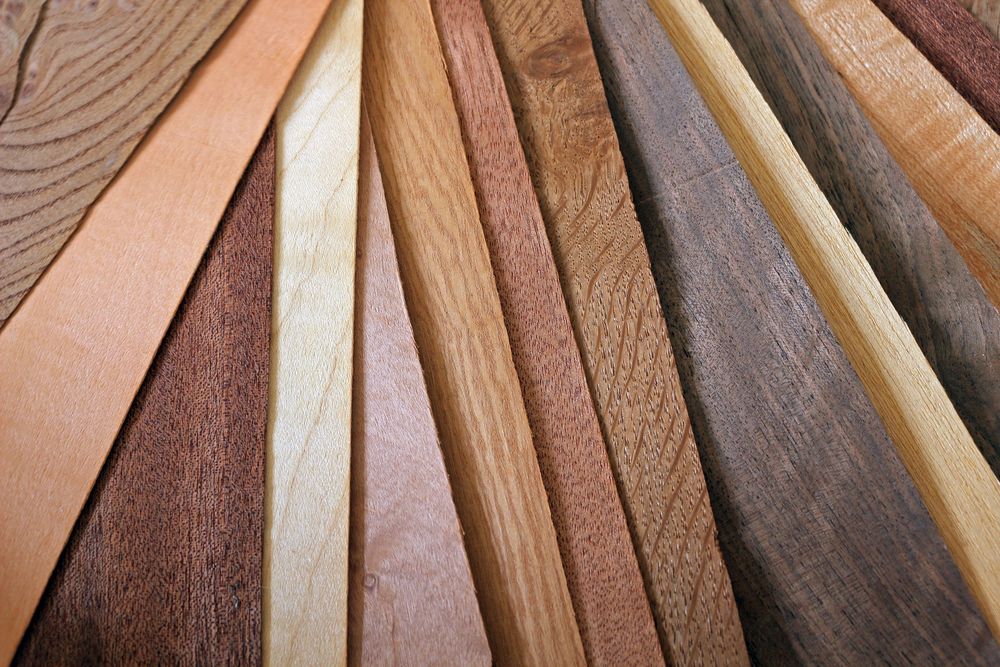
People who seek the appearance and feel of polished wood at a reduced price sometimes choose veneer treatments. These treatments are offered in a variety of wood species, from ebony to teak. Comparing these finishes to real wood, they are more affordable and robust. Such finishes are less likely to distort or crack even when exposed to a range of humidity and temperature conditions. Veneers last a very long time. To keep their shine, they can be sanded down, stained, and polished as needed. It may be applied to interior surfaces including wall panels as well as fixed and free-standing furniture.
Price: The average price of veneer ranges from INR 50 to INR 400 per sq. ft.
Common Uses: Veneer is commonly used for furniture, wall panelling and decorative inlays.
How to Maintain: To maintain the shine of wood veneer, dust the surfaces with a damp, lint-free cloth.
- Laminate
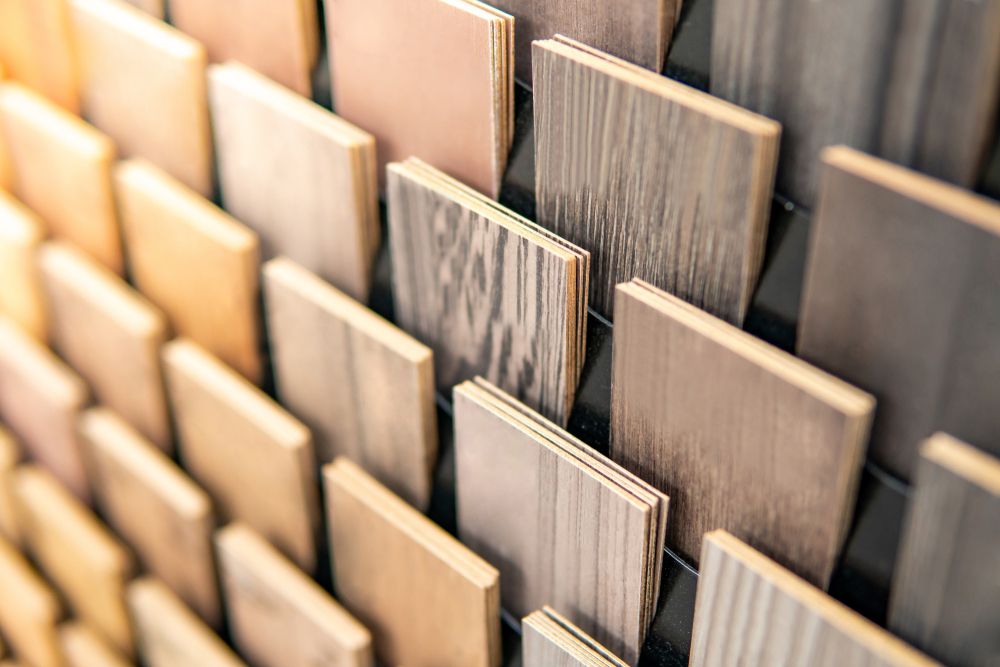
Veneers are created from thin sheets of real wood, but laminate is produced in factories. As a result, it is less like wood than veneers. However, laminates can give your interior dcor a wood-like appearance. Some laminates may also have a somewhat wood-like feel to them. Additionally, there are matt/gloss solid colors and finishes that replicate other materials for laminates. Laminate sheets are identical to one another because this is an interior finish that was created by humans. They are suitable for study rooms, kitchen cabinets, modular furniture, and children’s bedrooms because they are low maintenance and have a long lifespan.
Price: The average price of laminate ranges from INR 30 to INR 150 per sq. ft.
Common Uses: Laminate is commonly used for cabinet shutters.
How to Maintain: Laminate surfaces should be dusted regularly.
- Polished Wood
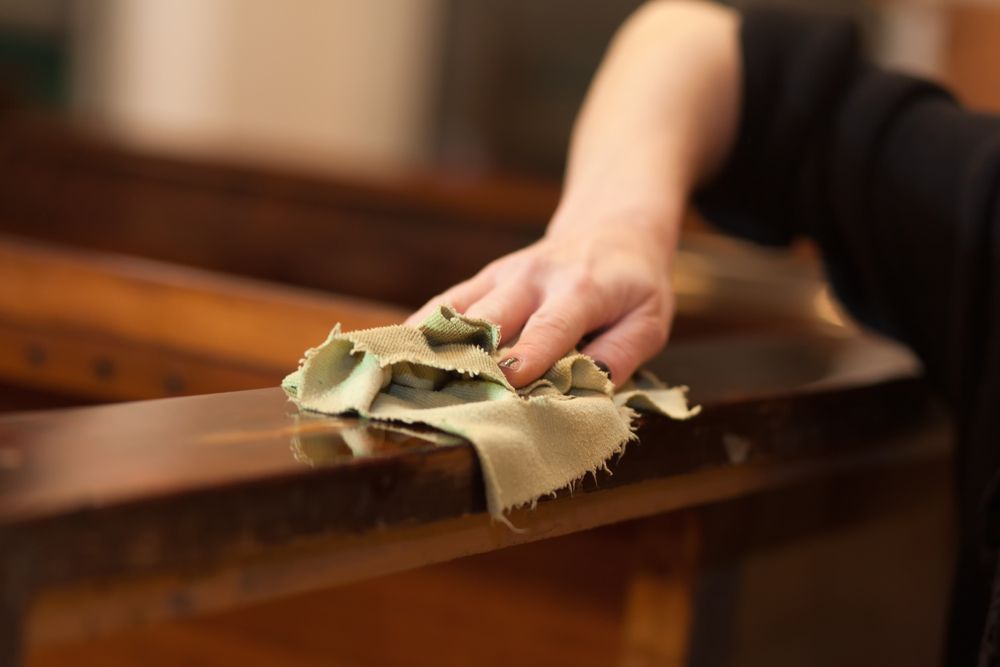
Polished wood is the ultimate choice for high-end interior treatments. A single wooden pillar in a house can have a significant impact. Depending on the wood kind and finish, prices change. Teak or rosewood varnish might be black, or it can be light like pine wood polish. Wood finishes are best suited to low-traffic areas because they require regular maintenance despite having a long lifespan. Having said that, wood can be restored in many finishes by sanding it. Polished wood finishes are frequently adorned with ornate or contemporary furniture and stair railings.
Price: The average price of wood polish, excluding the cost of wood itself, ranges from INR 30 to INR 500 per sq. ft.
Common Uses: Polished wood may be used for furniture, staircase treads, and railings.
How to Maintain: Polished wood should be treated with wood oil once every 6 months.
- Lacquered Glass
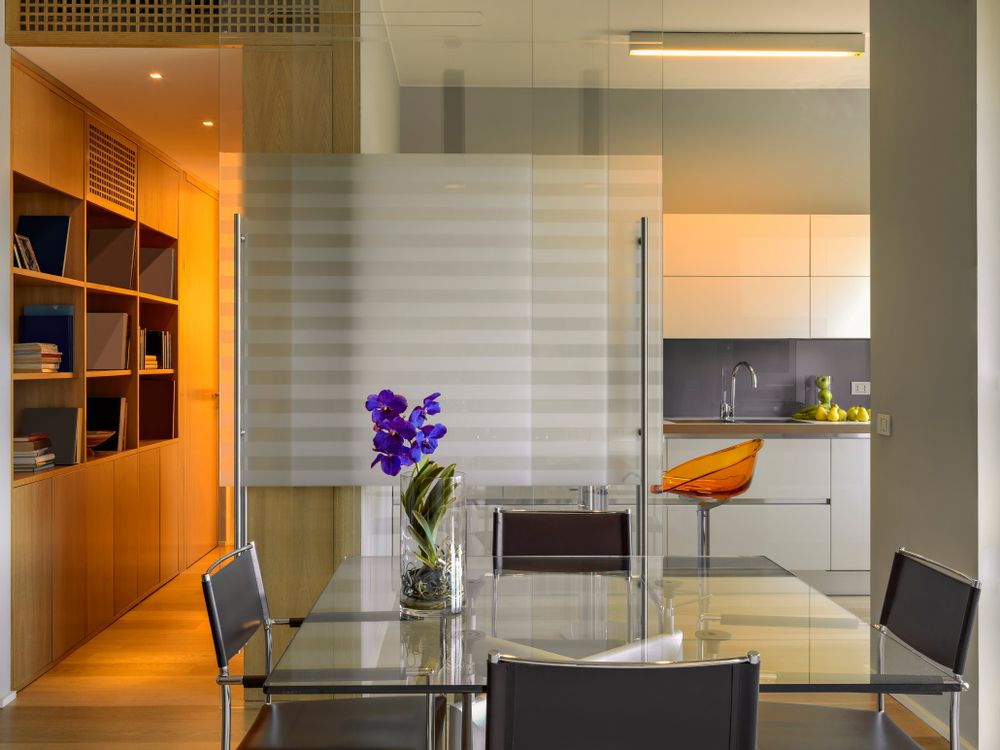
Back-painted glass is another name for the finishing materials used on lacquered glass. This finish is created by painting one side of a glass pane with opaque colors while leaving the other in the front, as the name would imply. The color is therefore visible through the glass. Cabinets in the kitchen, bathroom, library, and living room are best made of lacquered glass. Keeping it up is also pretty simple. The high-gloss appearance of lacquered glass complements contemporary interior designs. It may be tailored to fit different home décor schemes because it is available in a variety of colors.
Price: The average price of lacquered glass ranges from INR 200 to INR 600 per sq. ft.
Common Uses: Lacquered glass is commonly used for cabinet shutters and art pieces.
How to Maintain: Lacquered glass is easy to maintain and only requires regular dusting.
- Mirror

Another common choice for luxurious interior finishing materials is mirror finishes. Any room’s dcor is immediately improved, and it appears more opulent. Along with wall panels and wardrobe shutters, furniture can also receive these treatments. It features a couple different textures and comes in a variety of colors. For a vanity frame in a powder room, for instance, you may choose an antique mirror finish. Panel arrangement has an impact on mirror finishes as well. Either use a single giant mirror panel or pattern together several smaller ones.
Price: The average price of a 12 mm mirror ranges from INR 90 to INR 165 per sq. ft.
Common Uses: Mirror is commonly used for wall panels, wardrobe shutters, and decorative furniture.
How to Maintain: Regular dusting helps maintain mirror surfaces.
- Coloured Glass

Depending on the coating used and the application, colored glass may be translucent or opaque. This is a common option for beautiful windows and key features of a home, like the wall in the foyer or TV units. They can also be utilized as the shutters on bedroom cabinets. The area has a contemporary feel thanks to colored glass finishes. A space gains energy when a bright color like red or yellow is used. On the other hand, pastel-colored glass coatings can give any space a serene feel. Additionally, these coatings can be used to diffuse light.
Price: The average price of coloured glass ranges from INR 100 to INR 300 per sq. ft.
Common Uses: Coloured glass can be used for decorative windows and room dividers.
How to Maintain: Wiping down the surfaces with a dry cloth keeps coloured glass clean.
- Acrylic

For high-traffic areas and regularly touched surfaces like kitchen countertops, cabinets, bathroom vanities, etc., acrylic is one of the most popular finishing materials. They can also be used to give the back of shelves in a bookcase or cabinet a splash of color and a contemporary feel. Acrylic finishes come in a variety of colors, including transparent, translucent, and opaque hues. Acrylic coatings’ glossy look makes maintenance simple. On the other hand, these finishes are prone to scratches on the outside and can blister or distort when in close proximity to warm surfaces.
Price: The average price of 3 mm acrylic sheets ranges from INR 35 to INR 180 per sq. ft.
Common Uses: Acrylic is commonly used for countertops and backsplashes.
How to Maintain: Wipe down the surface with a damp cloth to keep it clean.
- Duco
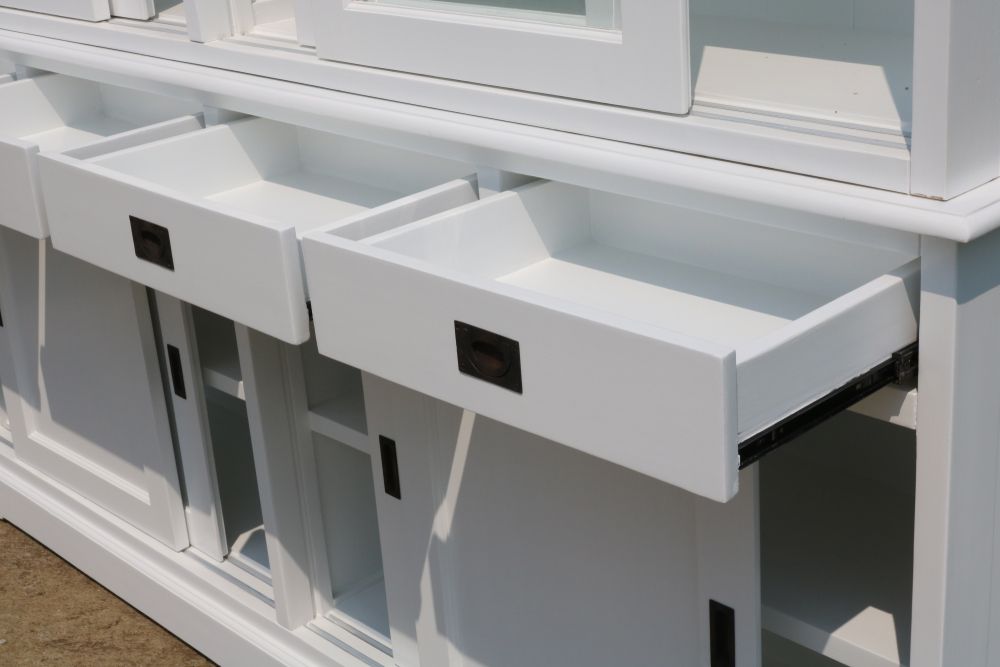
Duco is a particular kind of paint finish. This can be applied to modular systems, furniture, and even walls. Such surfaces are durable and resistant to scrapes and other elements that cause damage, making them ideal for high-traffic areas of the house. Duco interior coatings are appropriate for cramped interior spaces with little natural light since they replicate light. Duco finishes merely require routine dusting to prevent dirt from accumulating on the surface. Because of the potential for damage from high humidity, this finish is not recommended for bathrooms.
Price: The average price of Duco paint ranges from INR 150 to INR 500 per kg.
Common Uses: Duco paint finish is commonly used for furniture and staircase railings.
How to Maintain: Dusting with a dry cloth keeps grime from building up on Duco surfaces and maintains its lustre.
- Wallpaper
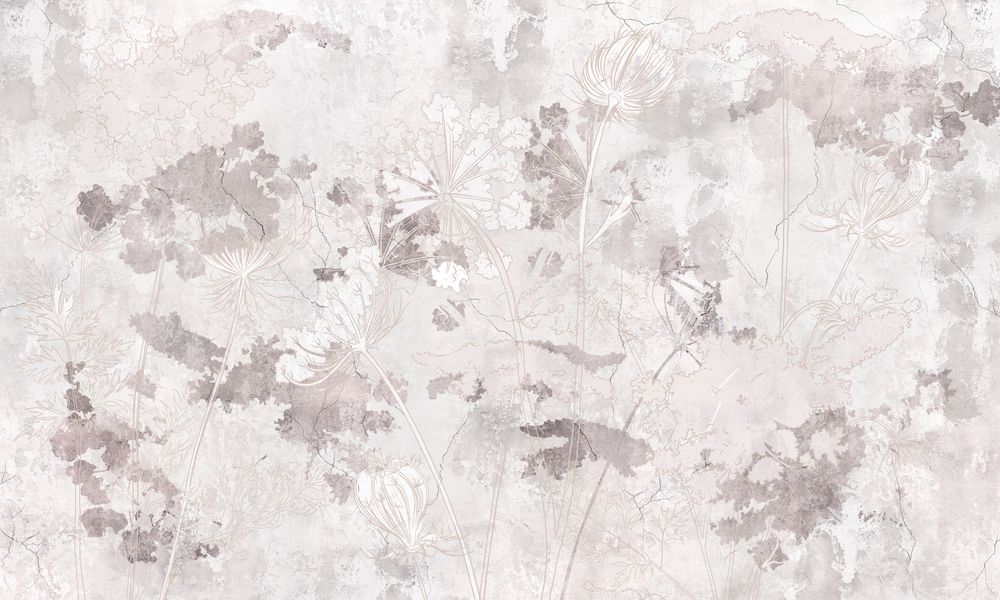
Wallpaper is now more widely used than just as a paintless option to walls. Uses for this adaptable interior finishing product range from bedroom walls to cabinet shutters. For feature walls, wallpaper coverings are a common option. Wallpapers come in a wide variety of hues, designs, and patterns, making them a versatile finish. Prices change based on patterns and quality. Additionally, wallpaper can be customized to fit your interior needs. A wipe down is typically sufficient for upkeep, but it is a sensitive material. So perhaps this isn’t the ideal option for a kid’s room.
Price: The average price of wallpaper ranges from INR 50 to INR 5000 per sq. ft.
Common Uses: Wallpaper is most commonly used as a wall finish.
How to Maintain: Dust wallpaper surfaces with a feather duster to keep it clean.
- Chalkboard
.jpg)
One of the more recent possibilities that is trendy in the realm of décor is chalkboard finishes. This coating replicates the look of vintage blackboards found in classrooms. These finishes can also be chalked on and afterwards removed, much like those boards. It is therefore perfect for kid’s bedroom and other locations where you might need to make temporary notes. A chalkboard finish would look wonderful on the inside of cabinet shutters in a kitchen. Similar to paint, chalkboard finishes are simple to maintain and come in a variety of colors.
Price: The average price of chalkboard paint ranges from INR 950 to INR 1150 per litre.
Common Uses: Chalkboard paint finish is ideal for wall panels in children’s rooms.
How to Maintain: You can maintain chalkboard surfaces with regular dusting.
- Copper
Copper has a lovely sheen when it is polished and develops a patina finish over time due to environmental factors. If you prefer a stylish, rustic aesthetic for your interior finishes, this is a terrific option. Focus area applications are where the material works best. Finishing a huge copper area can become prohibitively expensive and difficult to maintain. There are several thicknesses of copper sheets available, much like other materials.
Price: Copper is sold by weight. The average price of copper ranges from INR 500 to INR 600 per kg.
Common Uses: Copper may be used for fittings and fixtures as well as to highlight accent furniture pieces.
How to Maintain: Copper finishes need to be polished every 6 months to keep them from tarnishing.
- Fabric

A flexible interior finishing material is fabric. Although soft furnishings are the most obvious use, they can also be starched and used as wallpaper. Fabrics can be stacked or utilized to form ceiling canopies for a bohemian appearance. The types and colors of materials that can be utilized for house decor come in an infinite variety. It’s crucial to keep in mind that a fabric’s durability rises with its thickness.
Price: The cost of fabric depends on the type of chosen material.
Common Uses: When it comes to interior finishes, fabric is good for draperies and soft furnishings.
How to Maintain: Fabric must be spot-cleaned if you spill or drop anything on it.
Conclusion to Finishing Materials
The appeal of your property is influenced by the finishing materials you choose. However, since it takes time and work to maintain the appearance, you should also consider this from a practical standpoint. For instance, if you choose polished wood finishes, you must consistently preserve their glossy buff. Additionally, while choosing materials for your home’s interior design, you must consider the amount of light that will be reflected off the surface as well as how much moisture and heat the material will be exposed to. When choosing materials for kitchen and bathroom interior finishes, these considerations are very important.

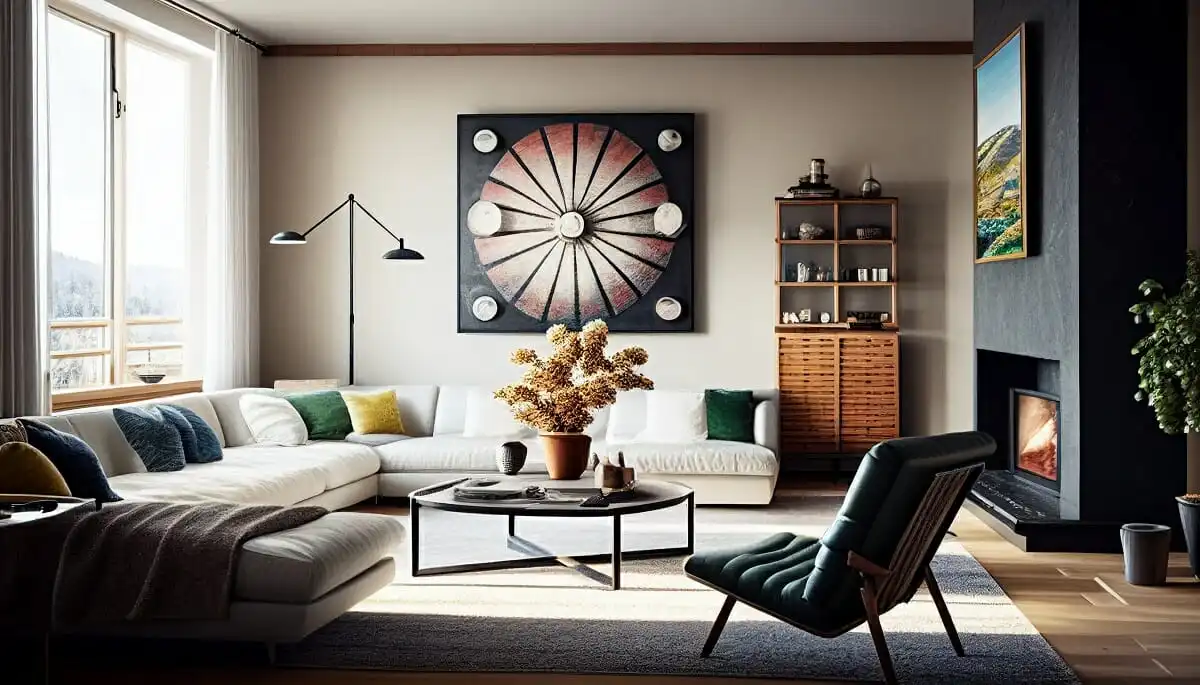
_1700472931.webp)
_1698311251.webp)


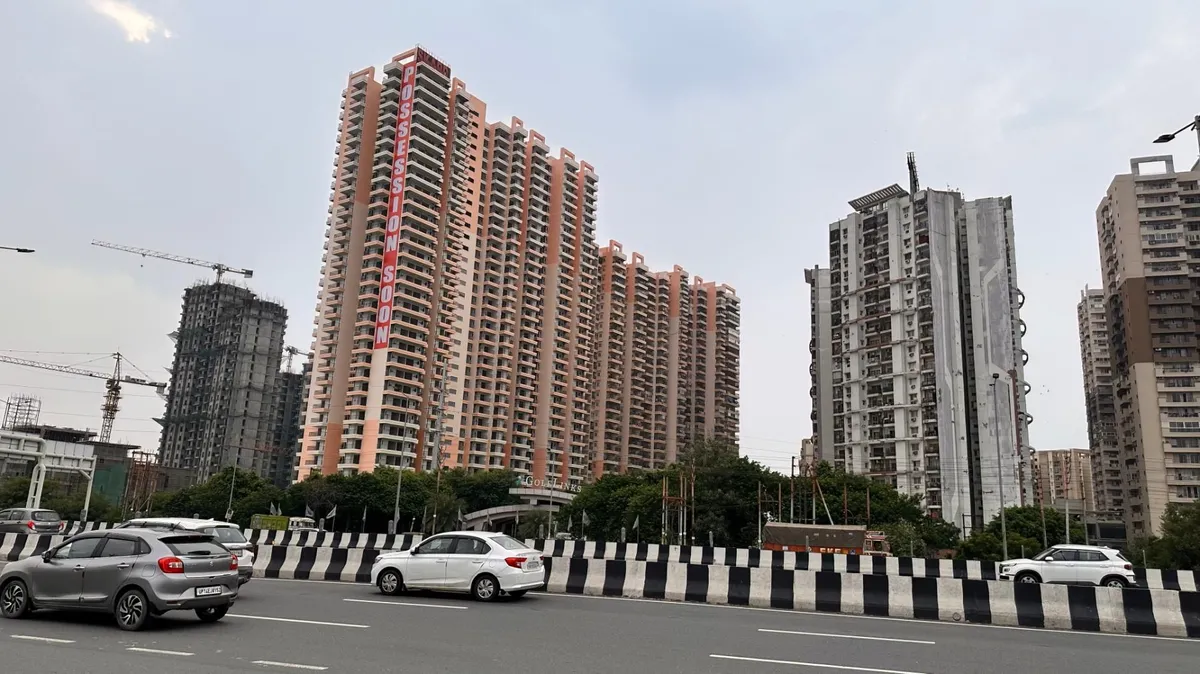

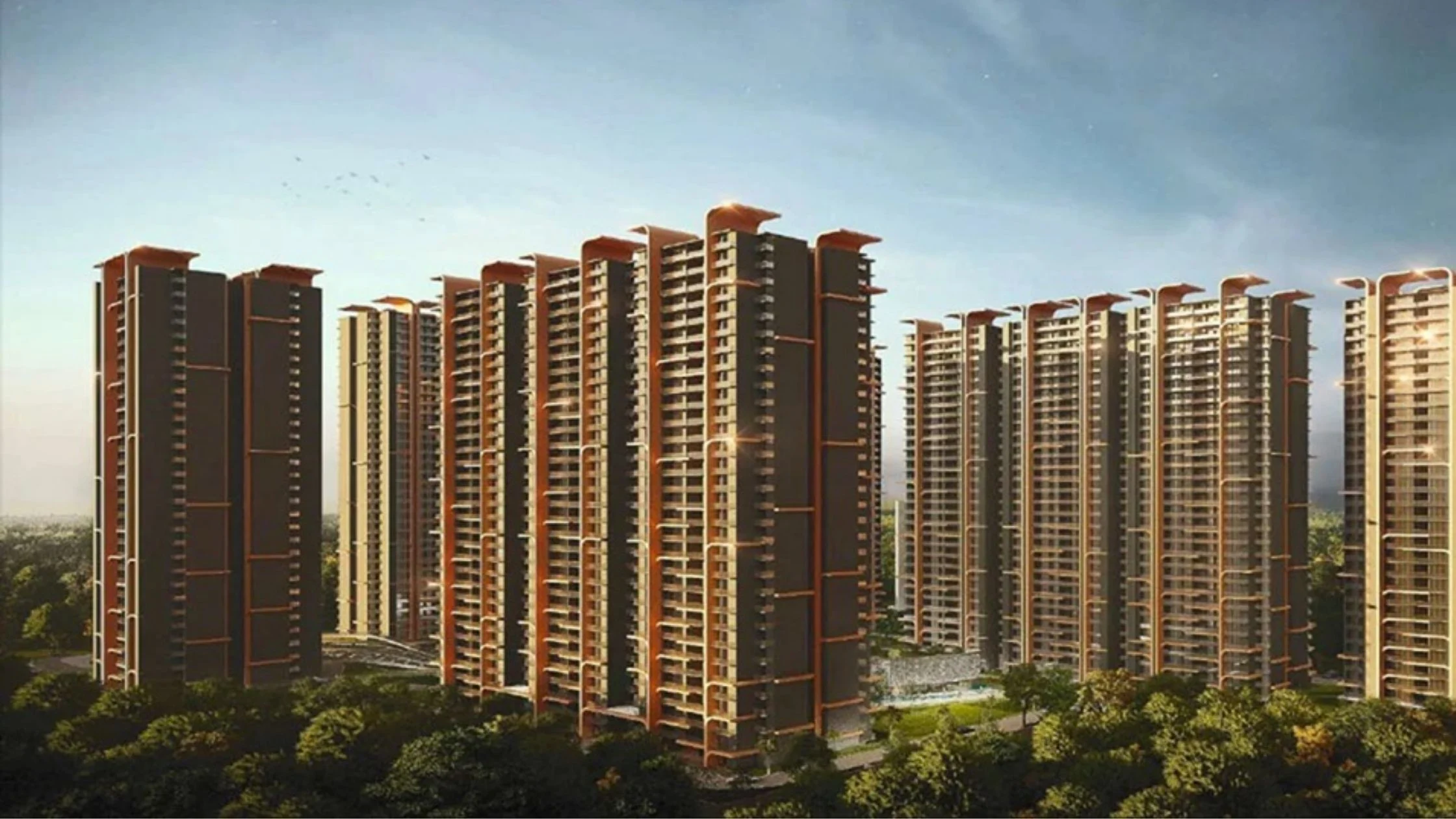


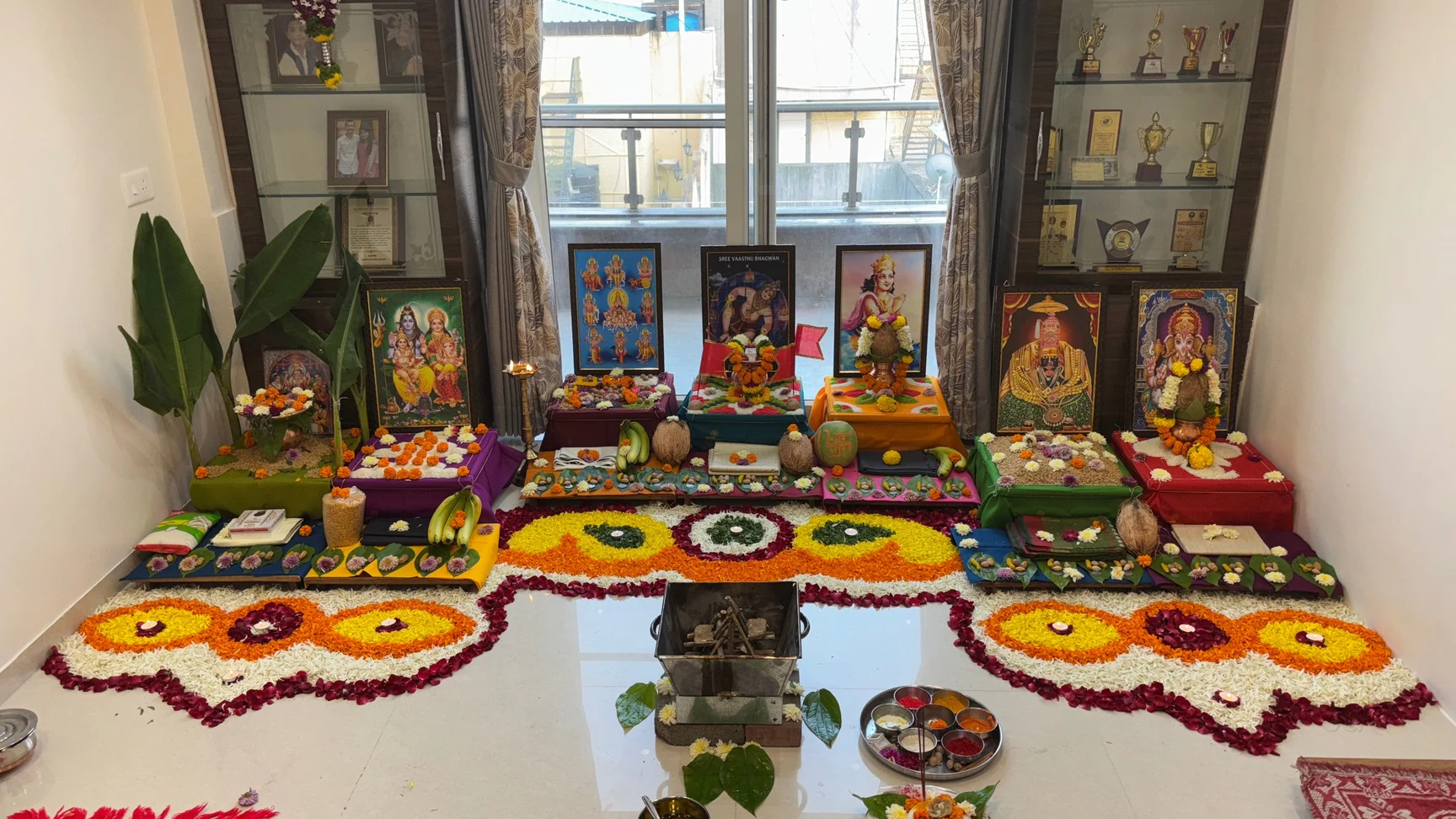
Ans 1. Veneer is costlier than laminate as it comprises thin slices of solid wood. Conversely, laminate is typically produced in manufacturing units.
Ans 2. Interior finishes. Interior finishes and space-division systems define the living spaces within residential buildings with a range of both natural and synthetic materials. The most widely used wall finish is gypsum board, a prefabricated form of traditional wet plaster.
Ans 3. Interior finishes encompass all the natural and synthetic materials and devices used to cover the interior and exterior of a building's framing structure to enhance its service and aesthetic qualities. Finishing work is the concluding stage of a construction.
Ans 4. It's said that when designing a space, there are seven elements that you should consider: space, form, line, light, colour pattern and texture. This week, we sat down with the team at Lauren Gilberthorpe Interiors to discuss the 7 elements of interior design, and how they impact how a room looks and feels.
Ans 5. The main finishing materials in modern construction include finishing mortars and concretes; natural and artificial masonry materials; decorative ceramics; materials and items made from wood, paper, glass, plastic, and metals; and paints and varnishes.
Ans 6. An example of interior finish are wall finishes, stairs and railings, posts and columns, flooring, cabinetry and counters, plumbing, interior walls that divide interior spaces, doors, lighting, etc